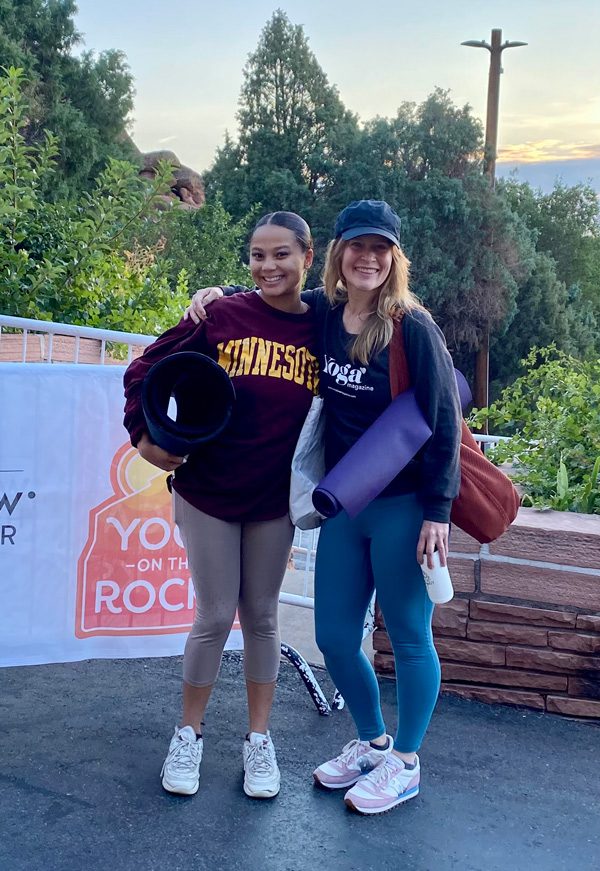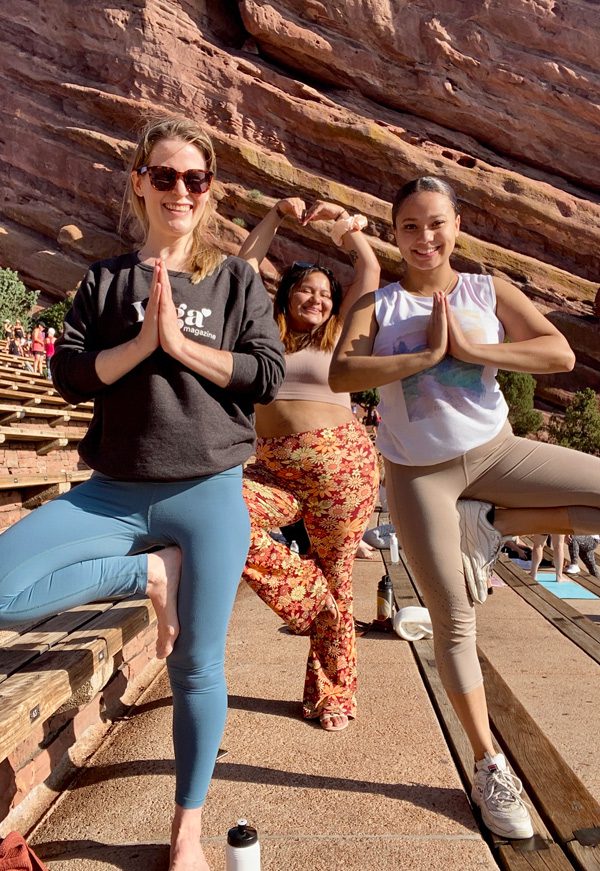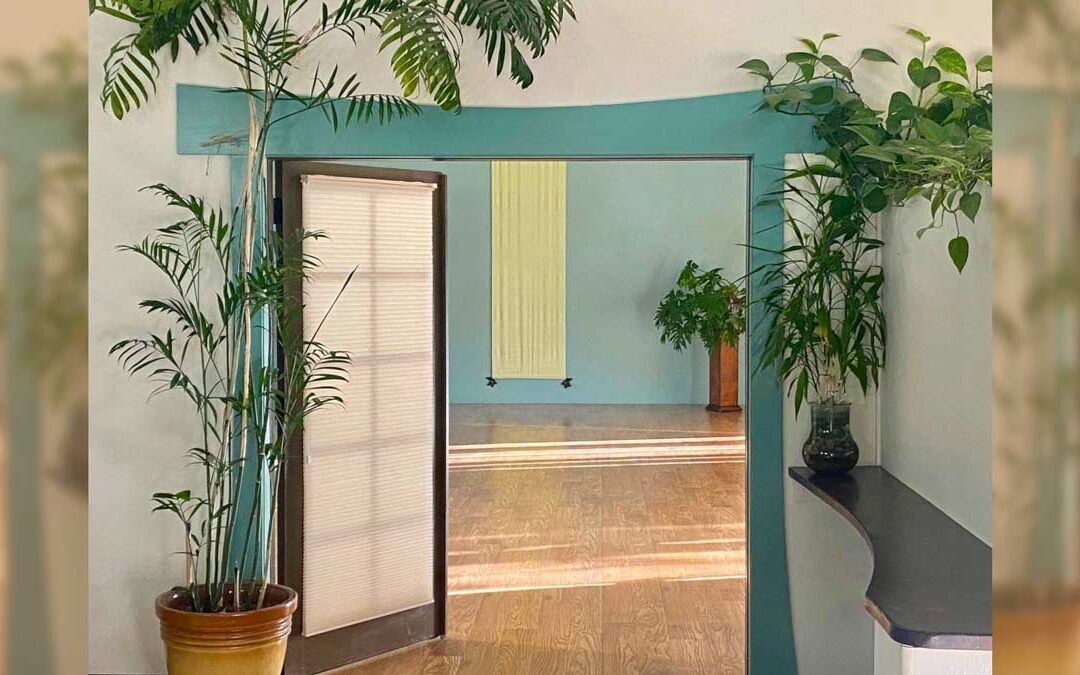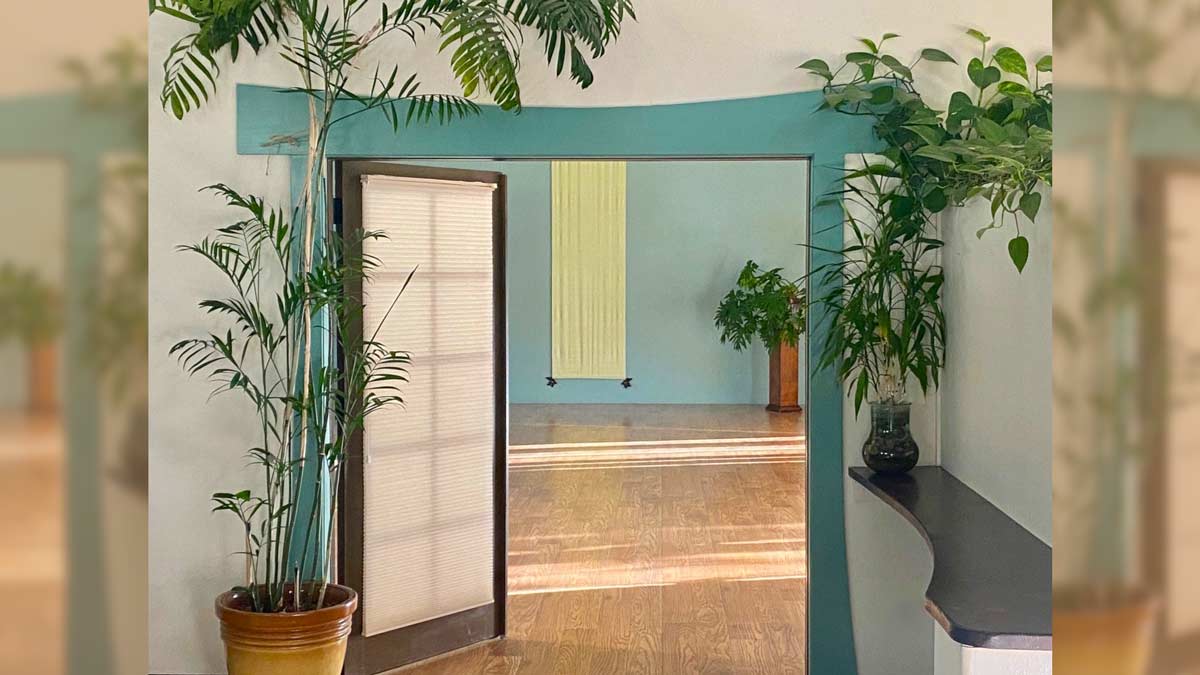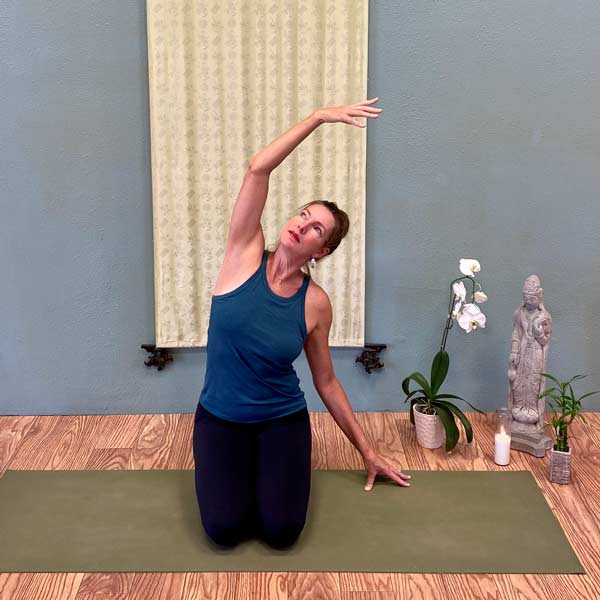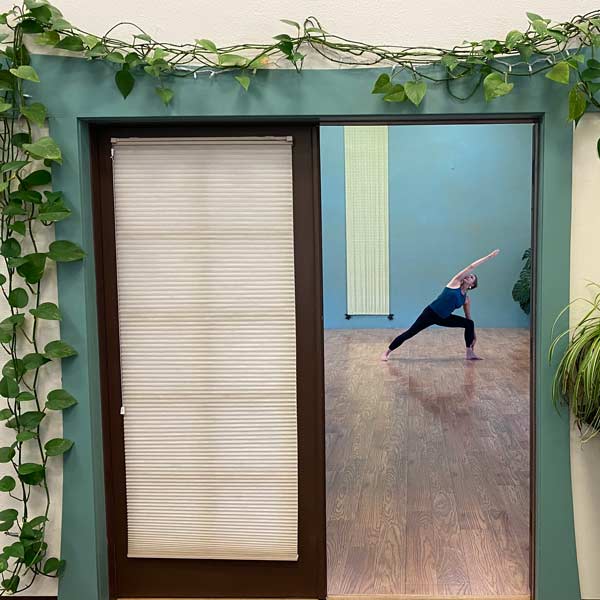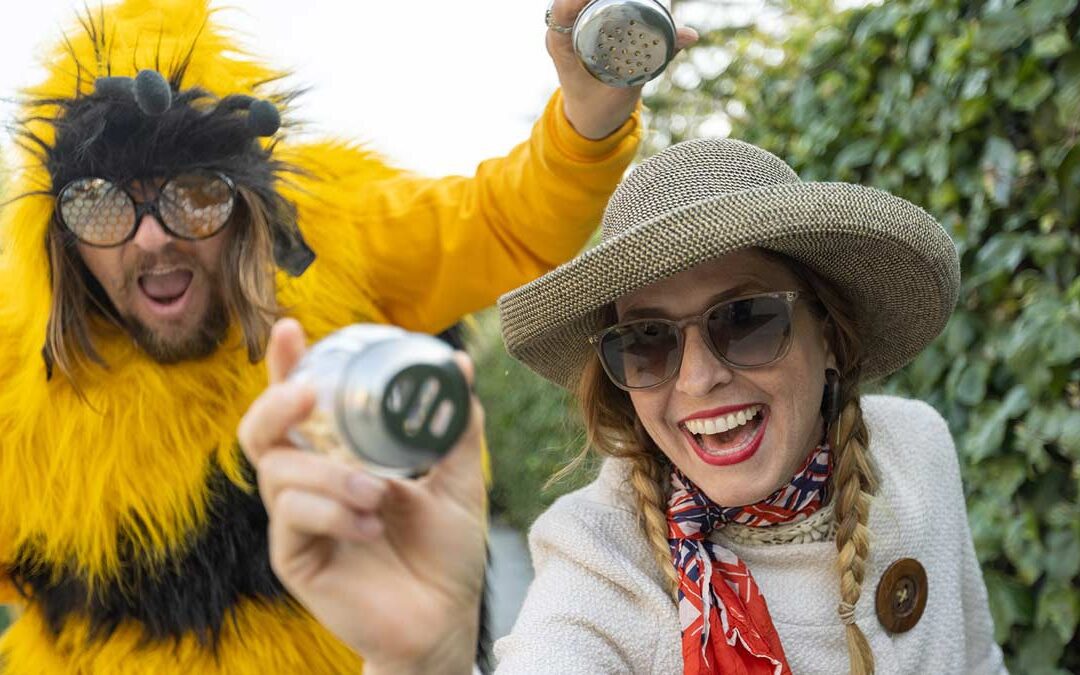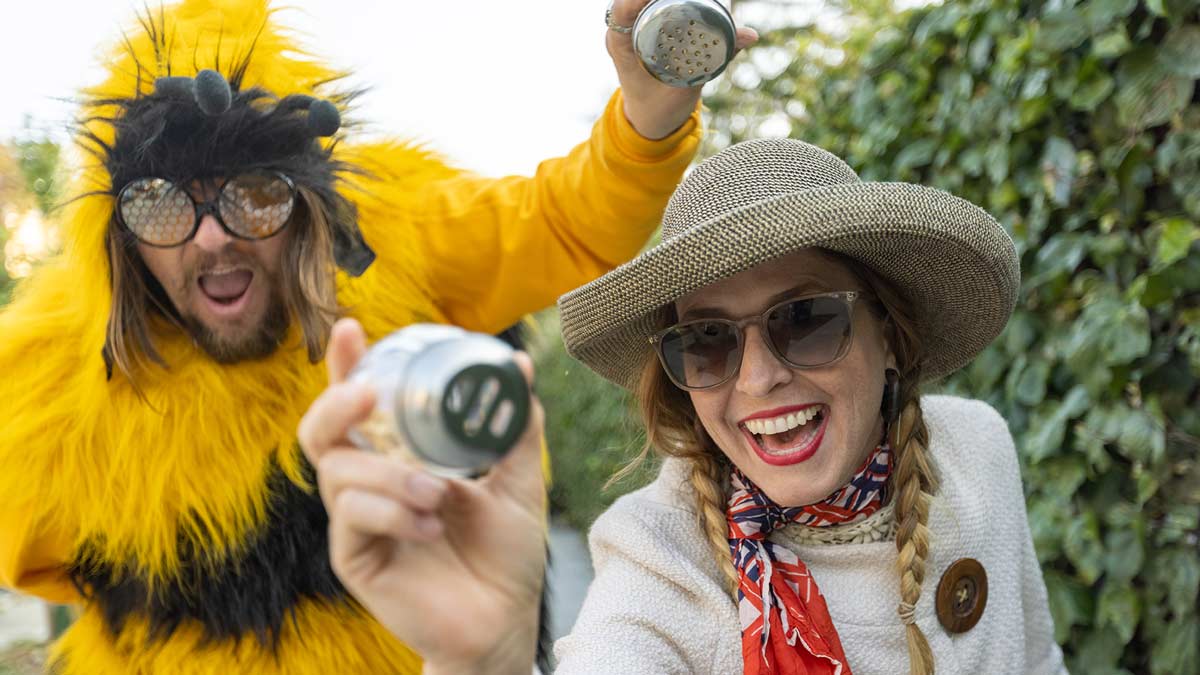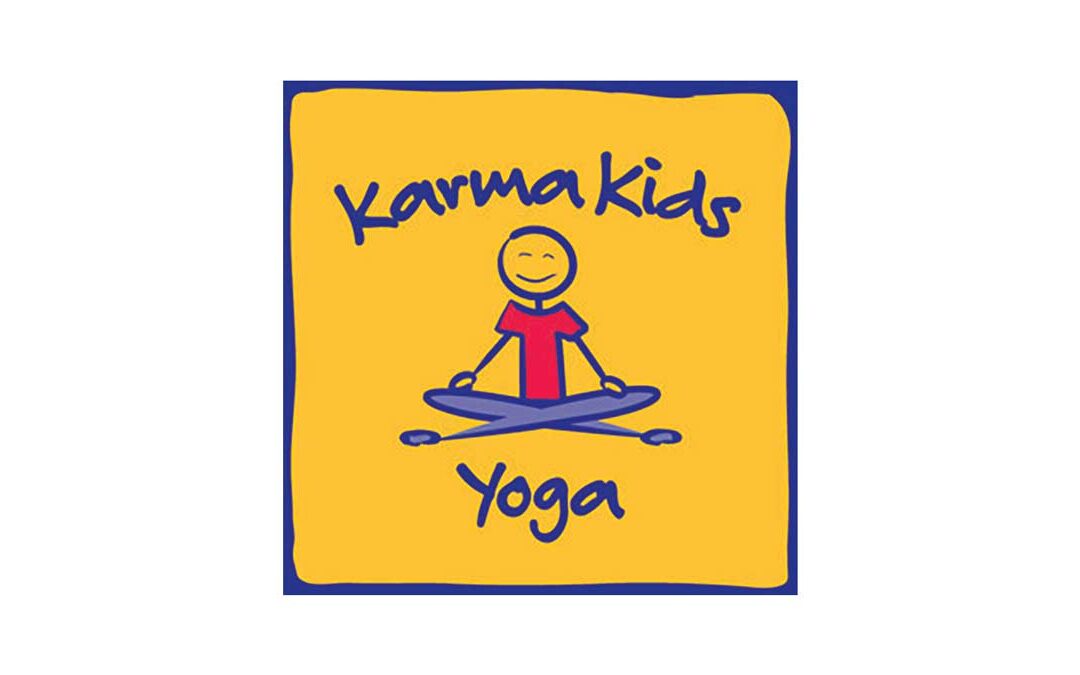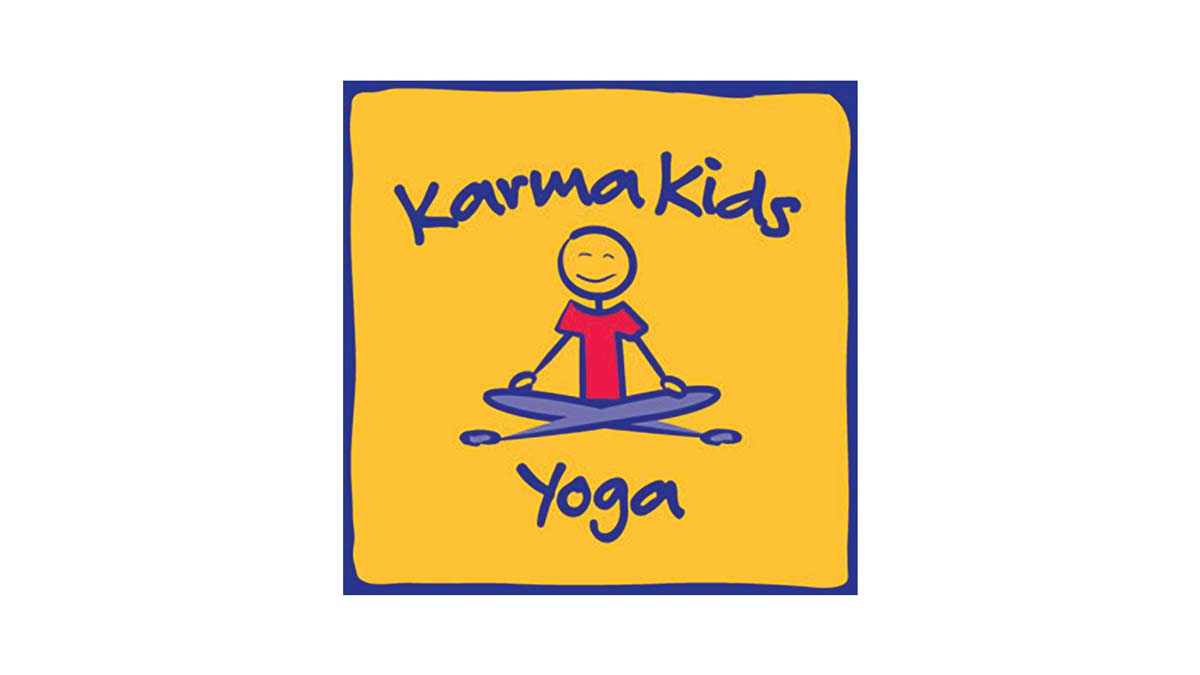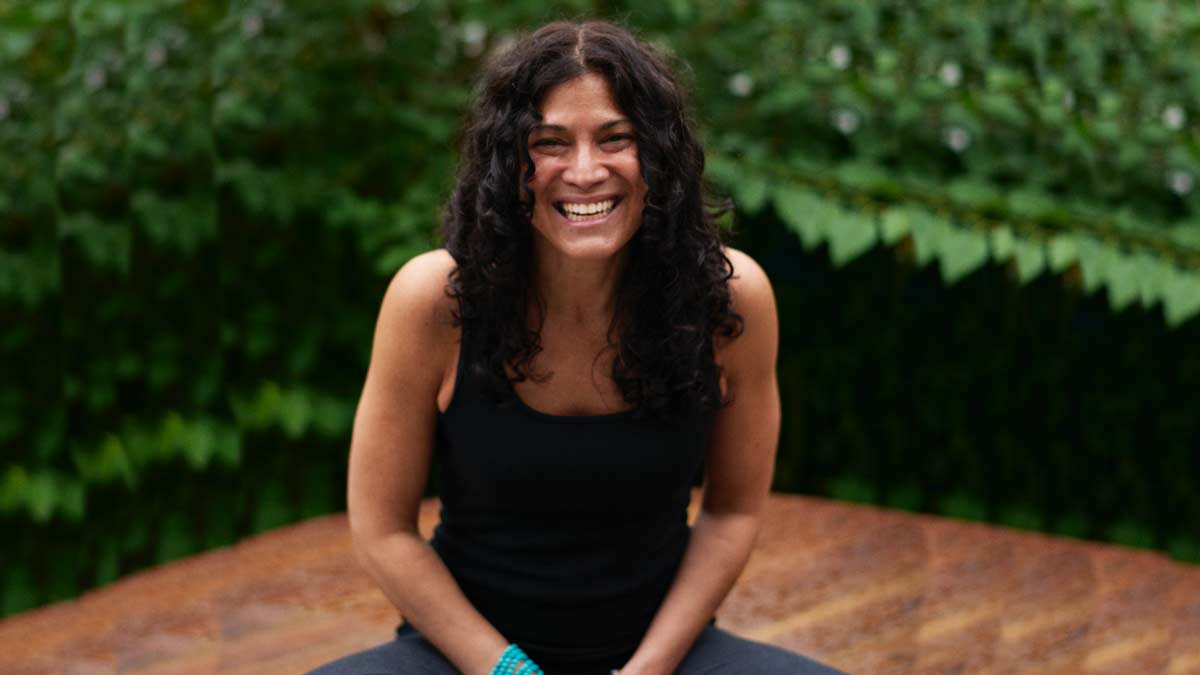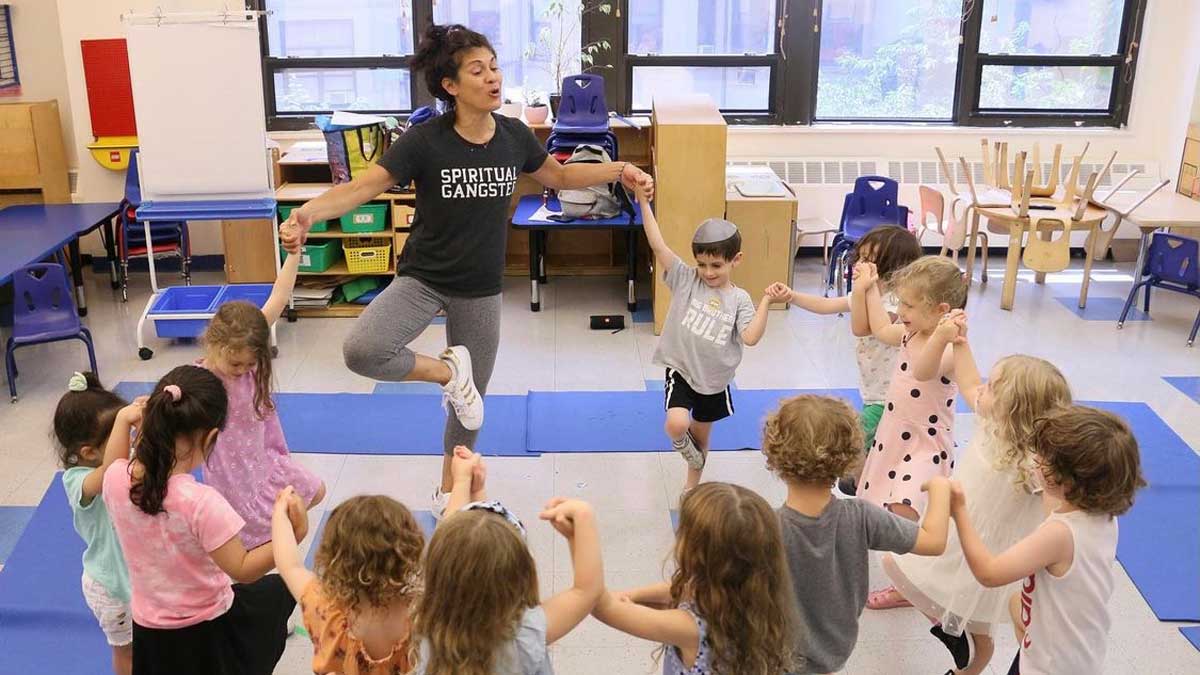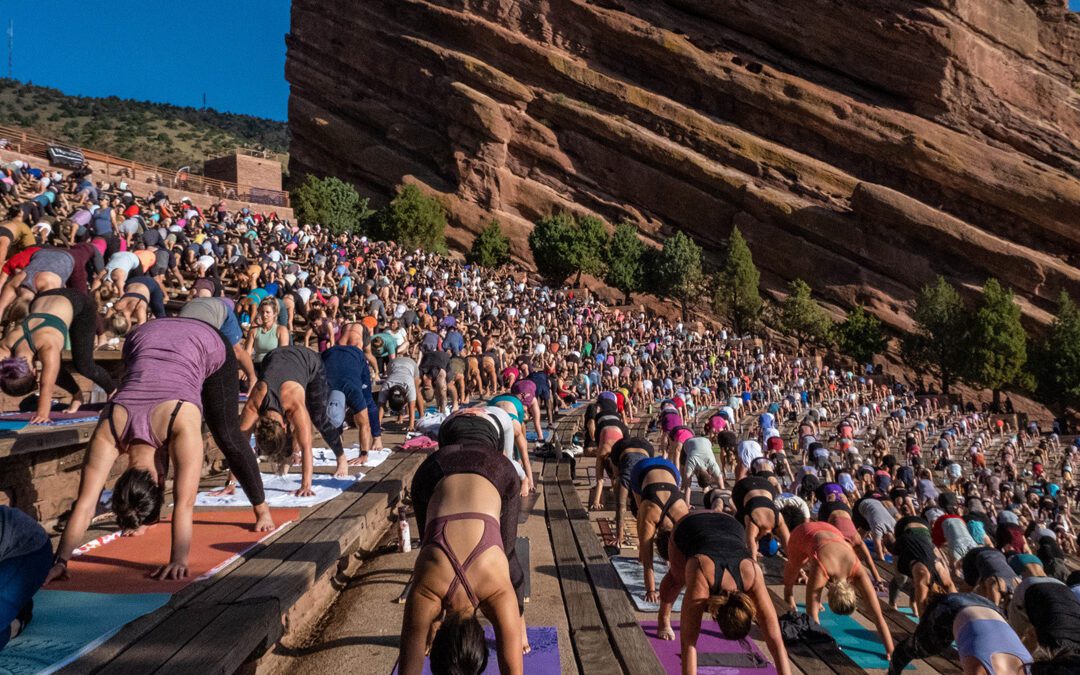
YOGA ON THE ROCKS
YOGA ON THE ROCKS
by: Melissa Honkanen
PROFILES
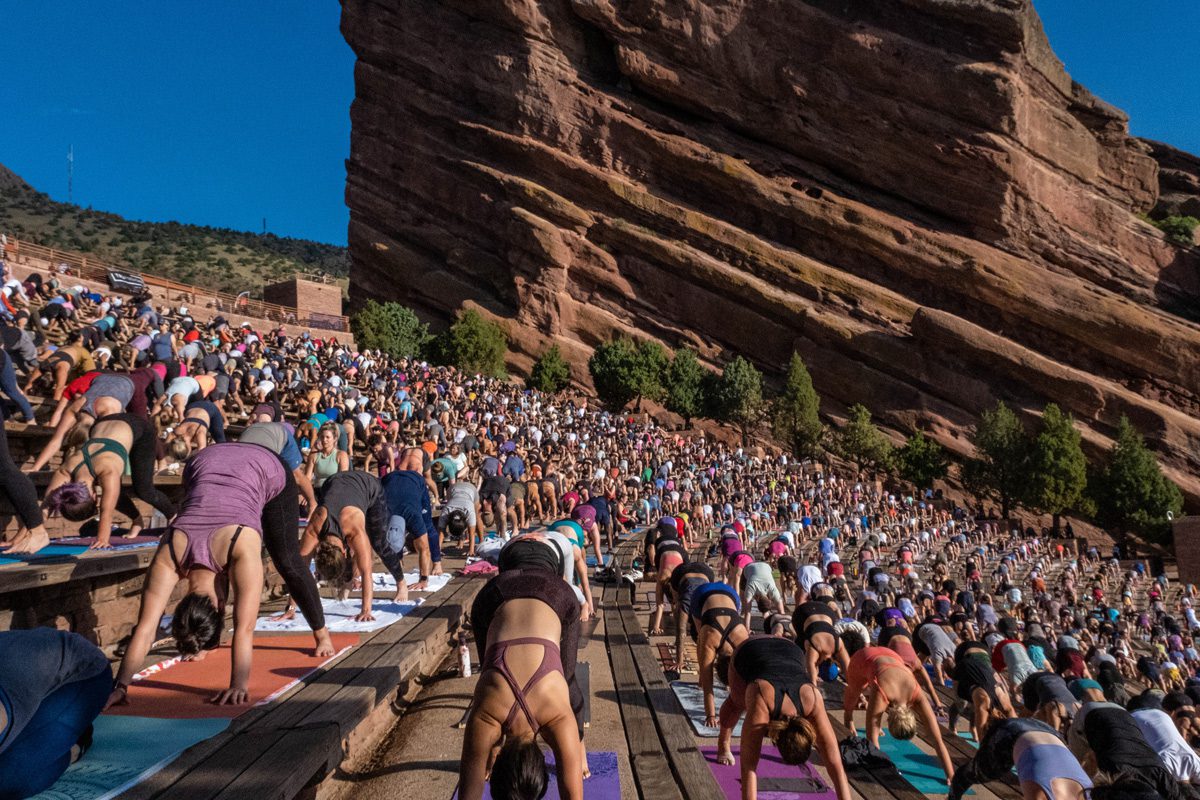
Waking up at 4:00 AM is not easy, especially on a Saturday. However, my niece and I knew we were up for the challenge. We didn’t hesitate to sign up for a sunrise yoga class at one of the most incredible outdoor venues in the world at Red Rocks Amphitheater in Morrison, Colorado, just 10 minutes west of Denver.
Little did we know that we would encounter not only an unforgettable yoga experience in nature, but we were able to participate in an incredible bilingual yoga class. I was fortunate to speak via Zoom with Chanty Cohen in her Miami home a few weeks after her class.
Can you tell me about your yoga discovery journey and how you decided to be a teacher?
When I started my 200-hour yoga teacher training, I didn’t know anything about yoga. The only thing I knew was that yoga is for flexibility. As a runner, I was like, well, let’s give it a try. Maybe I will be a better runner, and I will be more flexible.
How were you able to not only bring a beautiful yoga class to 2,500 participants, but to also create a class for a bilingual community?
Creating a bilingual class was a challenge because it was my first time doing it. When I started doing my research, I couldn’t find a class that was bilingual. Every single class that said “bilingual” was mostly one language leading the other, like 60% English and 40% in Spanish or the opposite. The purpose of creating a bilingual class was to benefit fluent English and/or fluent Spanish speakers.
Another big challenge was that I practiced yoga in English, so I didn’t know the names of the poses, muscles or cues in Spanish. So it was like, how do I say “curl your toes under”? I just kept asking people that I knew that have taught yoga in Spanish along with my own research.
I didn’t want a boring class in two languages. How can we speak to people that are fluent in English and/or Spanish? It was a lot of practice and failure. My friend, yoga mentor, and Yoga Director at TruFusion Denver Cat Wetenkamp was so supportive and believed in me to teach a bilingual Red Rocks Class. We met every week for two hours to create the class together.
How long did it take to create your sequence?
Like most yoga teachers, the sequence just flows in our head. I was just playing outside with my mat and then connecting pose to pose. That was not the tough part.
But now, if you ask me how my first sequence changed from the final Red Rocks yoga sequence, they’re so different. We changed a lot of things from my initial sequence because the class needed to be accessible for people that had never done yoga in their life. When I wasn’t practicing with Cat, I was practicing with my husband. I also taught the class to a group of friends who knew yoga and who weren’t familiar with yoga in Miami to see if it made sense to them.
How was teaching yoga at Red Rocks different from teaching in a studio?
Yoga at Red Rocks was more like a performance. When you are teaching a class to 2,500 people, you really don’t want to mess up. If I mess up and change a pose, and I change the sequence, the demo team is going to get confused. A challenging part was that I needed to know the sequence by heart.
How were you able to stay centered and hold space for yoga in a 2,500 participant event venue?
Thankfully, two additional yoga teachers were able to demo different variations near the stage close to me. So it was an amazing team. My bilingual class took a lot of practice, but when I get into teaching mode, it’s like my comfort zone. In the past, I had attended someone else’s yoga class at Red Rocks and had an awesome experience. However, I remember the teacher was apologizing a lot. She was messing up the sequence, which I don’t blame her, it’s so hard! You are in front of all of these yogis and everyone is watching you. It’s uncomfortable. But that day, I learned as a teacher that you can’t apologize. No matter what happens, I will make it through, I will make it work, I will put it together.
I needed to give attendees a good experience, and that experience is not by having the best yoga sequence in the world or by having the best voice. I can deliver a good experience if I’m present. And that’s something that we can all do, just be present and be connected with the people that are around you.
My “why” was also bigger than my fear. Like Yoga Love Magazine, I want to be inclusive. I want to promote diversity. I want to show people that they don’t need to be flexible to practice yoga. My “why” is bigger than my excuses and my fear and my emotions. I had to trust myself and deliver my message by having a strong theme that we are all connected. Besides the physical practice, yoga is so much more. Yoga is now. We are practicing yoga now to be fully present with each other. Sharing our energy in a community is important. I wanted to make sure to bring this message to the Red Rocks yoga class.
Learn more: redrocksonline.com
PHOTOS BY: Tamara Montes de Oca

